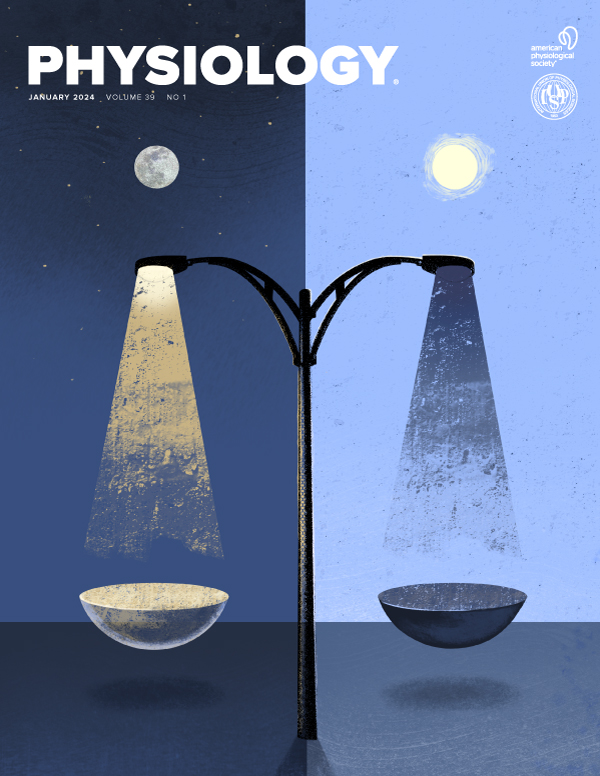The WNK-SPAK/OSR1 kinases and NKCC1 control epithelial barrier function by regulating claudin-2 expression
IF 10.3
2区 医学
Q1 PHYSIOLOGY
引用次数: 0
Abstract
Conditions that cause the loss of epithelial barrier integrity are often accompanied by dysregulation of tight junction protein expression and/or localization. Recently, we have reported that patients with mutations in SLC12A2; the gene encoding the basolateral Na+-K+-2Cl- cotransporter (NKCC1), suffer from severe gastrointestinal deficits, including chronic gastrointestinal inflammation, gastrointestinal hemorrhage, intestinal obstruction, and constipation. Although the intestinal inflammation observed in patients with loss of NKCC1 function may or may not be due to tight junction dysfunction, we investigated whether the loss of NKCC1 function affects paracellular ion transport and epithelial barrier function. Wild-type HT29-MTX-E12 and CRISPR/Cas9-mediated NKCC1 knockout HT29 clones were tested for tight junction protein expression and localization. Tightness of epithelial cell monolayer was assessed by measurement of transepithelial resistance and permeability of molecular tracers in transwell filters. Tight junction protein localization was assessed by immunofluorescence. Loss of NKCC1 expression strongly increases the expression of claudin-2. Genetic deletion of WNK1, WNK4, SPAK and OSR1 resulted in a substantial increase in claudin-2 expression, confirming an essential role of WNK-SPAK/OSR1 pathway in tight junction regulation. Loss of NKCC1 significantly reduces the transepithelial electrical resistance (TER) indicating an increase in paracellular ions flux, consistent with upregulation of the cation-selective and channel-forming claudin-2. In addition, NKCC1-KO monolayers showed a significant increase in the paracellular flux of small molecules like fluorescein (0.33 kDa), while the permeability of higher molecular weight TRITC-Dextran (4 kDa and 70 kDa) remained unchanged. Thus, NKCC1 regulates tight junction protein expression and loss of NKCC1 function affects epithelial barrier integrity. This is the full abstract presented at the American Physiology Summit 2023 meeting and is only available in HTML format. There are no additional versions or additional content available for this abstract. Physiology was not involved in the peer review process.WNK-SPAK/OSR1激酶和NKCC1通过调节claudin-2的表达来控制上皮屏障功能
导致上皮屏障完整性丧失的条件通常伴随着紧密连接蛋白表达和/或定位的失调。最近,我们报道了SLC12A2基因突变的患者;该基因编码基底外侧Na+- k +- 2cl -共转运体(NKCC1),患有严重的胃肠功能障碍,包括慢性胃肠炎症、胃肠出血、肠梗阻和便秘。虽然在NKCC1功能丧失的患者中观察到的肠道炎症可能是由于紧密连接功能障碍,也可能不是,但我们研究了NKCC1功能丧失是否会影响细胞旁离子运输和上皮屏障功能。检测野生型HT29- mtx - e12和CRISPR/ cas9介导的NKCC1敲除HT29克隆的紧密连接蛋白表达和定位。通过测定transwell过滤器中分子示踪剂的透性和透性来评估上皮细胞单层的紧密性。免疫荧光法测定紧密连接蛋白的定位。NKCC1表达缺失会显著增加claudin-2的表达。WNK1、WNK4、SPAK和OSR1基因缺失导致claudin-2表达大幅增加,证实了WNK-SPAK/OSR1通路在紧密连接调控中的重要作用。NKCC1的缺失显著降低了经上皮电阻(TER),表明细胞旁离子通量增加,与阳离子选择性和通道形成的cladin -2的上调一致。此外,NKCC1-KO单层膜对荧光素等小分子的胞外通量(0.33 kDa)显著增加,而对高分子量tritc -葡聚糖(4 kDa和70 kDa)的通透性保持不变。因此,NKCC1调节紧密连接蛋白的表达,NKCC1功能的丧失影响上皮屏障的完整性。这是在2023年美国生理学峰会上发表的完整摘要,仅以HTML格式提供。此摘要没有附加版本或附加内容。生理学没有参与同行评议过程。
本文章由计算机程序翻译,如有差异,请以英文原文为准。
求助全文
约1分钟内获得全文
求助全文
来源期刊

Physiology
医学-生理学
CiteScore
14.50
自引率
0.00%
发文量
37
期刊介绍:
Physiology journal features meticulously crafted review articles penned by esteemed leaders in their respective fields. These articles undergo rigorous peer review and showcase the forefront of cutting-edge advances across various domains of physiology. Our Editorial Board, comprised of distinguished leaders in the broad spectrum of physiology, convenes annually to deliberate and recommend pioneering topics for review articles, as well as select the most suitable scientists to author these articles. Join us in exploring the forefront of physiological research and innovation.
 求助内容:
求助内容: 应助结果提醒方式:
应助结果提醒方式:


